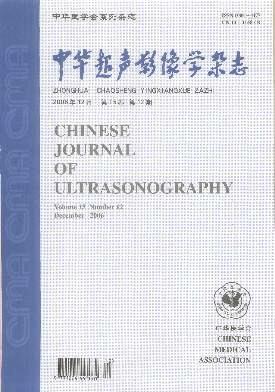Baseline survey and discussion for the ultrasound machines of ultrasound departments in Shanghai medical institutions
Q4 Medicine
引用次数: 0
Abstract
Objective To investigate the current basic situation of ultrasound machines of ultrasound departments in Shanghai medical institutions, and to provide the basis for making management policy in order to promote medical quality. Methods Questionnaire surveys about ultrasound machines and service ability including producing countries of ultrasound machines, the number of ultrasound machines, using years of ultrasound machines, yearly workload and the yearly number of patients that each ultrasound machine accepted were made in 2013 and 2018, respectively. Statistical results were compared between the two surveys. Results Compared with 2013, the share of imported ultrasound machines declined in 2018 (82% vs 91%). Compared with 2013, the number of ultrasound machines in Shanghai medical institutions had increased by 31% in 2018 (2 123 vs 1 617). The occupancy rate of ultrasound machines in tertiary hospitals was the highest (tertiary hospitals 40%, secondary hospitals 25%, primary grade hospitals 20%, and private hospitals 15%). Compared with 2013, the proportion of ultrasound machines that have been used for more than 10 years increased (9% vs 4%), the yearly workload of ultrasound examination had increased by 46% (19.82 million person-time vs 13.59 million person-time). Tertiary hospitals bored the highest proportion of the workload (tertiary hospitals 51%, secondary hospitals 35%, primary grade hospitals 4%, and private hospitals 10%). Currently, the number of ultrasound machines per 10, 000 people in Shanghai was 1.14. The yearly number of patients that each ultrasound machine accepted had increased by 11% (9300 person-time vs 8400 person-time in 2018). Conclusions The scale of ultrasound departments in Shanghai medical institutions has been developing. Brand localization of ultrasound machines is improving. However, the renewal ability of ultrasound machines still needs to be improved. The workload of ultrasound department is getting heavier. Hierarchical diagnosis and treatment is unbalanced. Key words: Ultrasound department; Ultrasound machines; Hospitals; Surveys and questionnaires上海市医疗机构超声科超声机基线调查与探讨
目的了解上海市医疗机构超声科超声机的基本情况,为制定提高医疗质量的管理政策提供依据。方法分别于2013年和2018年对超声设备和服务能力进行问卷调查,包括超声设备生产国、超声设备数量、超声设备使用年限、年工作量和每台超声设备每年接受的患者数量。对两次调查的统计结果进行了比较。结果与2013年相比,2018年进口超声机的份额有所下降(82%对91%)。与2013年相比,2018年上海医疗机构的超声机数量增加了31%(2 123台,而1 617台)。三级医院超声机的使用率最高(三级医院40%,二级医院25%,一级医院20%,私立医院15%)。与2013年相比,使用10年以上的超声机的比例增加了(9%比4%),超声检查的年工作量增加了46%(1982万人次比1359万人次)。三级医院承担的工作量比例最高(三级医院51%,二级医院35%,一级医院4%,私立医院10%)。目前,上海每万人拥有的超声波设备数量为1.14台。每台超声波机每年接受的患者数量增加了11%(9300人次,而2018年为8400人次)。结论上海市医疗机构超声科室规模不断扩大。超声波机器的品牌本地化正在提高。然而,超声波机器的更新能力仍有待提高。超声科的工作量越来越大。分级诊断和治疗是不平衡的。关键词:超声科;超声波机;医院;调查和问卷
本文章由计算机程序翻译,如有差异,请以英文原文为准。
求助全文
约1分钟内获得全文
求助全文
来源期刊

中华超声影像学杂志
Medicine-Radiology, Nuclear Medicine and Imaging
CiteScore
0.80
自引率
0.00%
发文量
9126
期刊介绍:
 求助内容:
求助内容: 应助结果提醒方式:
应助结果提醒方式:


